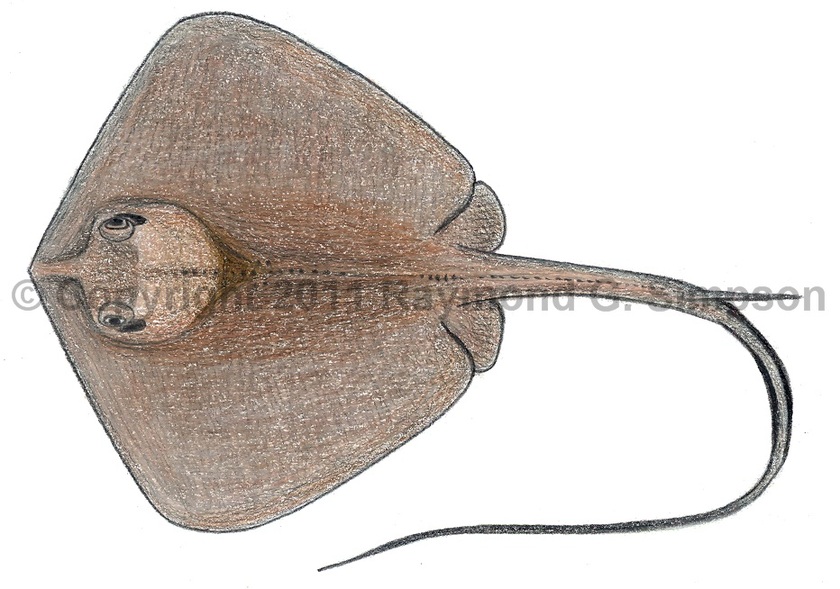
Common Name
Bluntnose Stingray
Year Described
Lesueur, 1817
Identification
A short-snouted species of Hypanus with a broad rhomboidal disk. Eyes and spiracle large. Tips of pectoral fins subangular (not rounded). Pre-orbital length about equal to distance between the spiracles, with slightly convex margins of snout, giving the species a blunt-nosed appearance. The dorsal surface has a line of medial and two scapular series of denticles. Median denticles do not reach the caudal spine. Ventral finflap larger and taller than dorsal. Tail long and whip-like with spine close to tail base. Pelvic fins protrude beyond pectorals.
Color
Dorsum medium to dark brown overall. Underside pale with dark gray fin margins in some specimens.
Size
Maximum size to 100cm DW.
Habitat
Shallow coastal waters (<10m).
Range
New Jersey to the southern Caribbean Sea. Found around the Caribbean islands but rare or absent from the continental waters south of Florida.
References
Last, P. R., Naylor, G. J. P., & Manjaji-Matsumoto, B. M. 2016. A revised classification of the family Dasyatidae (Chondrichthyes: Myliobatiformes) based on new morphological and molecular insights. Zootaxa, 4139 (3): 345-368.
Santos, H.R.S. and M.R. de Carvalho. 2004. Description of a new species of whiptailed stingray from the southwestern Atlantic Ocean (Chondrichthyes, Myliobatiformes, Dasyatidae). Boletim do Museu Nacional do Rio de Janeiro, Nova Série. Zoologia No. 516: 1-24.
Other Notes
Records from Brazil refer to Hypanus hypostigma.
Moved from Dasyatis to Hypanus based on morpological and molecular data (Last et al., 2016).